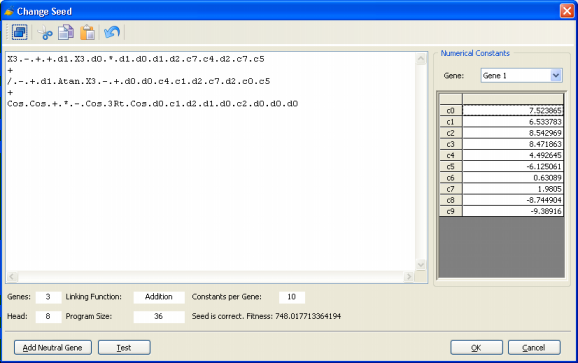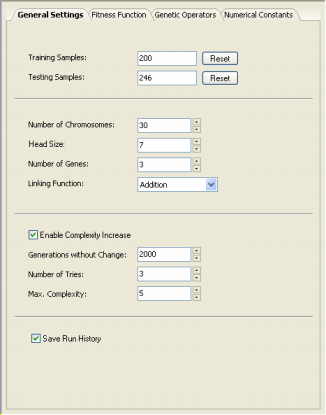| The addition of a neutral gene
or term to a model might seem, at first sight, the wrong thing to do as most of the times we are interested in creating
more parsimonious models, not the opposite. But one should look at this as modeling in progress as, for really complex phenomena, it is not uncommon to approximate a complex function progressively. Thus, being able of introducing extra terms to your seed is a powerful modeling tool and GeneXproTools 4.0 allows you to do that either by selecting Add Neutral Gene in the Edit Menu or by pressing the Add Neutral Gene button in the Change Seed window.
Here, by pressing the Add Neutral Gene button, you will see a neutral gene being added to your model. By doing this, you are giving the learning algorithm more room to play and, hopefully, a better, more complex program will evolve.
Whenever you are using the Complexity Increase Engine of GeneXproTools 4.0, you must fill the Generations Without Change box to set the period of time you think acceptable for evolution to occur without improvement in best fitness, after which
a mass extinction is created or a neutral gene (an extra term) is automatically added to
the evolving models; the Number of Tries box corresponds to the
number of consecutive evolutionary epochs (defined by the parameter
Generations Without Change) you will allow before a neutral gene is
introduced in all evolving models; in the Max. Complexity box you write the maximum number of terms (genes) you’ll allow in your model and no other terms will be introduced beyond this threshold. |

